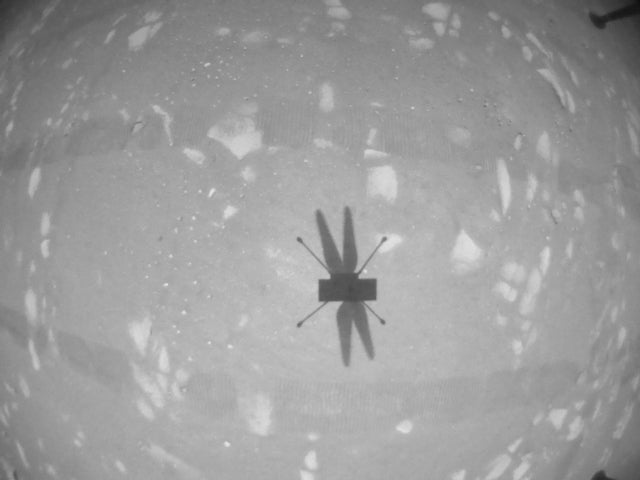Nasa Mars helicopter Ingenuity flies across surface for the first time

Your support helps us to tell the story
From reproductive rights to climate change to Big Tech, The Independent is on the ground when the story is developing. Whether it's investigating the financials of Elon Musk's pro-Trump PAC or producing our latest documentary, 'The A Word', which shines a light on the American women fighting for reproductive rights, we know how important it is to parse out the facts from the messaging.
At such a critical moment in US history, we need reporters on the ground. Your donation allows us to keep sending journalists to speak to both sides of the story.
The Independent is trusted by Americans across the entire political spectrum. And unlike many other quality news outlets, we choose not to lock Americans out of our reporting and analysis with paywalls. We believe quality journalism should be available to everyone, paid for by those who can afford it.
Your support makes all the difference.Nasa has flown a helicopter across another planet for the first time.
The Ingenuity helicopter made its second journey, taking off into the air and hovering as it did during its pioneering mission earlier this week.
But this flight saw the drone fly to a higher altitude, conduct a longer hover – and conduct “lateral flying” for the first ever time.
The second successful flight is another breakthrough for the helicopter’s team, who just days ago were struggling with a software update to get Ingenuity into the air at all.
Nasa had initially aimed to fly “no earlier than” 11 April. But trouble came the day before that flight, when a safety system inside the helicopter brought an end to a test of the rotors.
Engineers then spent the following week attempting to eliminate the issue with a change to the command sequence and an update to the software that powers the drone.
It was finally put to the test on Monday, when Ingenuity successfully spun up its blades and took off from the ground, hovering before safely touching back down again. That marked the first time that humanity had ever conducted a controlled, powered flight on another planet.
The new test saw the helicopter hover slightly higher, to an altitude of five rather than three meters. When it got to that height, it hovered briefly and then tilted itself so that it could move sideways for two meters.
There, it moved around to use its colour camera to take a number of pictures, which Nasa will receive back from the helicopter. Those pictures did not come in the most recent downlink from the helicopter, but Nasa advised followrs to “stay tuned!”
“We hope to downlink those in the coming sols [Mars days],” Nasa wrote on Twitter. “While taking the images was part of the flight plan, we needed to prioritize getting the flight data (and this smaller black-and-white image) first. We’ll share them as soon as we have them!”
Ingenuity then dropped down safely back onto the surface.
Nasa intends to make a number of such tests in the coming weeks, during what it is calling the “month of Ingenuity”. Those tests will see the helicopter fly progressively higher, further and longer.
All of that is in service of a craft that is intended entirely as a technological test, rather than a science mission. Data from each of the flights will be used to inform future engineering, including yet more spacecraft designed to fly on other worlds.
Join our commenting forum
Join thought-provoking conversations, follow other Independent readers and see their replies
Comments